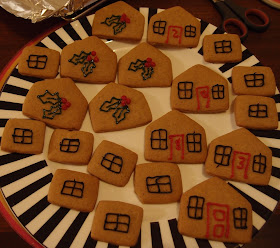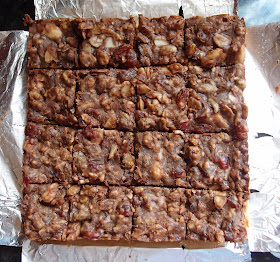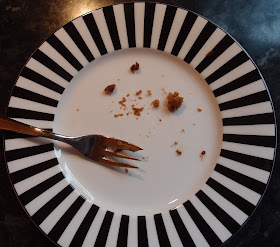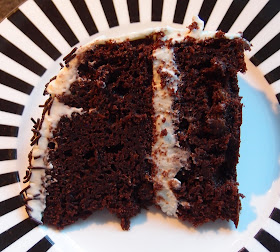It
isn’t Christmas without gingerbread and, much as I always love classic
gingerbread men...
... I wanted to make something different to anything I’d made before. I found this shop on Etsy selling cutters to make the cutest little gingerbread houses and I fell in love! (Etsy is an incredible site; I know it gets some stick for some of the weird stuff you can find on it but I challenge anyone to spend 20 minutes or so browsing the site without finding something they want!)
The houses are a bit of work but can be made in stages, as gingerbread keeps very well for days and days in an airtight tin. I always prefer piping on a flat surface so decorate all the panels and let the icing set, before assembling the houses. As these are small they don’t require much icing to hold them together.
To provide a bit of scale, here’s a house next to my favourite mug (I dread to think how many cups of tea this cup has held!):
I’m not much of a decorator and – weak and pathetic as it sounds – get hand cramps if I do too much piping, so my houses are minimalist, but, if you’re better at that sort of thing you could really go to town.
The gingerbread was lovely – it was somewhere between ginger biscuit and the softer, more cakey, gingerbread. It puffed up while cooking giving a nice smooth finish and the taste had just enough fire to it. I don’t think it’s been a very exciting year for cookery books but this recipe came from one book that did capture my interest – Gingerbread Wonderland by Mima Sinclair.
This
is likely to be my last post before Christmas so I shall sign off hoping that
you all have a lovely day – doing whatever it is you have chosen to do! Happy
Christmas everyone!
Ingredients
140g
golden syrup
200g soft light brown sugar
200g unsalted butter
4 teaspoons ground ginger
2 teaspoon ground cinnamon
1 teaspoon ground nutmeg
1 teaspoon bicarbonate of soda
500g plain flour
1 teaspoon salt
1 egg
200g soft light brown sugar
200g unsalted butter
4 teaspoons ground ginger
2 teaspoon ground cinnamon
1 teaspoon ground nutmeg
1 teaspoon bicarbonate of soda
500g plain flour
1 teaspoon salt
1 egg
To
decorate: tubes of icing, and anything else you wish!
Method
Place
the golden syrup, sugar, butter and spices in a saucepan larger than you need
and melt together over a gentle heat stirring all the time until the sugar has
dissolved – you can tell when this has happened by looking at the back of your
spoon: if you can still see tiny grains it needs a bit longer.
Increase
the heat and bring to the boil (don’t stir during this process).
Remove
the pan from the heat and beat in the bicarbonate of soda – it will froth up,
hence using a larger saucepan.
Stir
only until the bicarbonate of soda is incorporated and put to one side to cool
– about 15 minutes should be enough.
Fold
the flour and salt into the cooled mixture.
Beat
in the egg – take care not to overbeat the mixture; as soon as the egg is
incorporated stop mixing.
Tip
the dough out onto a work surface or – and this is my preference – a sheet of
non stick foil.
Knead
until it is smooth. Initially the dough will be very sticky and it will be
tempting to add flour but DON’T! This will make the biscuit tough.
Cut
the dough in half and shape into fat discs before wrapping separately in
clingfilm and refrigerating for 1 hour.
Preheat
the oven to 160C/fan oven 140C/325F/gas mark 3.
Roll
the chilled dough out between two sheets of clingfilm and use the cutters of
your choice.
Place
on a baking sheet lined with either baking paper or non stick foil.
Bake
for about 6-7 minutes, if making a small biscuit, or until just starting to
feel firm to the touch. It will puff up
during cooking and if it feels almost marshmallow soft, it needs a couple of
minutes longer.
Leave
to cool for at least 10 minutes on the baking sheet before moving to a wire
rack to cool completely.
Decorate
as you wish.
Bask
in the glory of the wonderful thing you have created.
Eat.












































